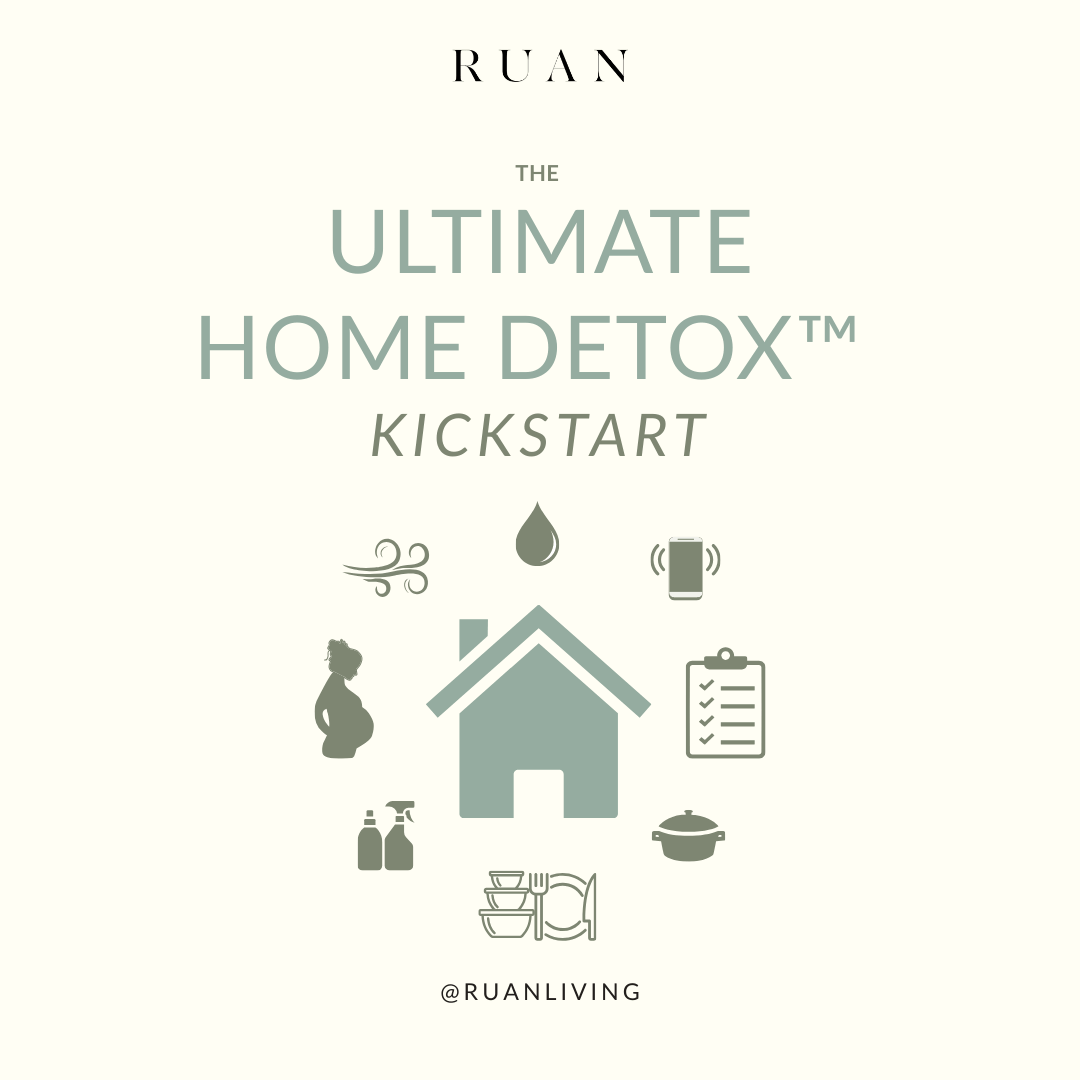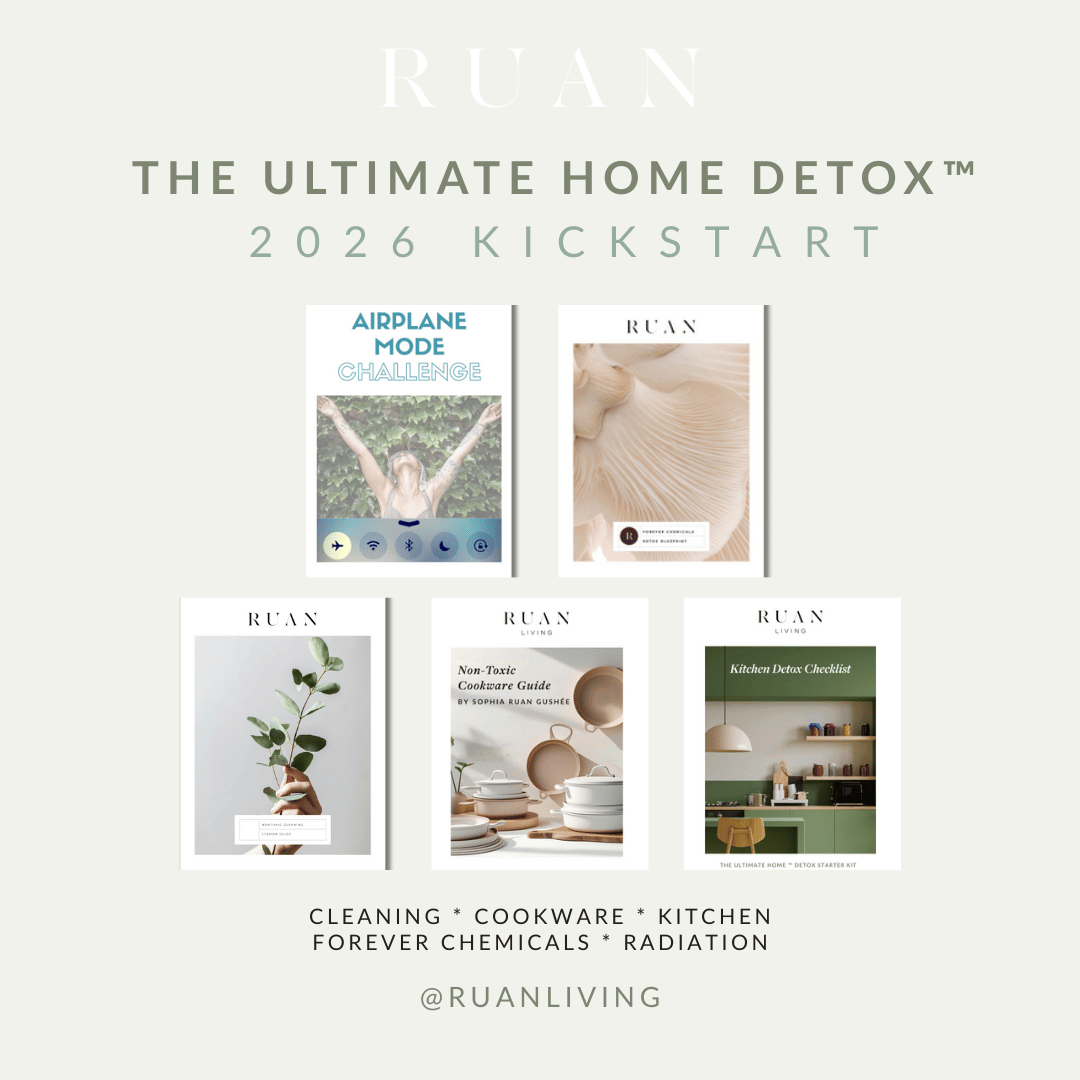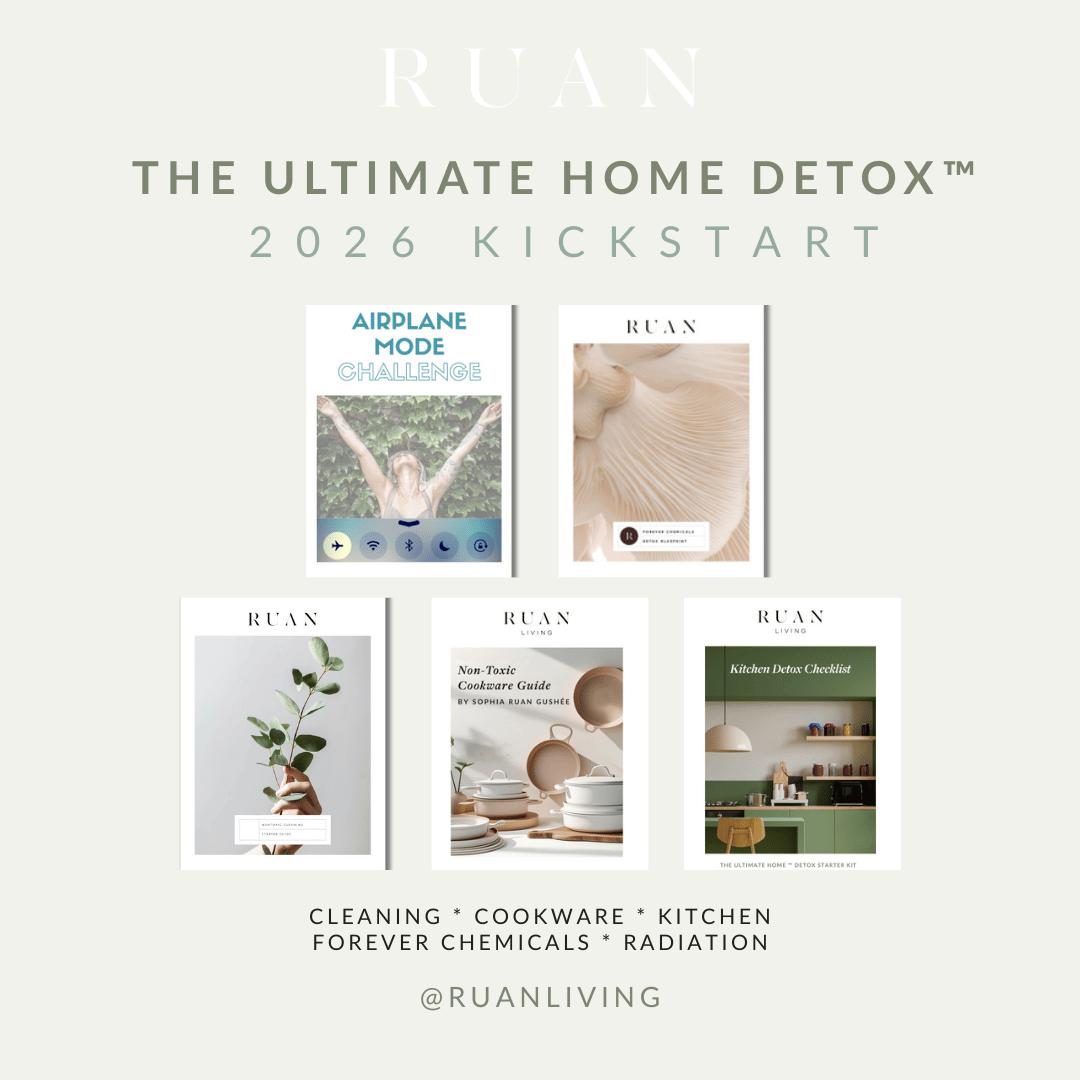
Nontoxic Window Curtains: Tips to Find the Best Ones for Your Home
Jan 23, 2018by Angela Cummings and Sophia Ruan Gushée
When detoxing the home, details—such as the materials and maintenance of curtains—can impact your health.
Similar to table runners, furniture fabrics, bathroom towels and other types of textiles, curtains can be made from natural materials or synthetic chemicals. Curtains made from natural materials are healthier since they contain fewer chemicals.
Healthier textiles are made from natural sources, like plants and even animals. Examples include cotton, hemp, wool, bamboo, and silk.
Nontoxic Window Curtains
To select nontoxic window curtains, we should assess the textiles, dyes, and fabric finishes. Chemicals often found in each of these components include chlorine, formaldehyde, pesticides, and PFCs. They may contribute to health issues, like asthma and cancer.
Below are tips for choosing natural materials, dyes and finishes.
MATERIALS
- Cotton. Made from cottonseed, cotton is a popular and affordable nontoxic curtain material. Buying conventional cotton contributes to practices that pollute our environment with pesticides. These pesticides are absorbed by the cotton plant and cottonseed that are used to make cotton fabrics. There is conflicting evidence as to how much pesticide remains in cotton fabric and whether that amount is significant enough to threaten human health. I think it's hard to generalize since cotton is grown and manufactured from such diverse practices that it's safer to buy organic cotton for items that have frequent contact with your skin (like pajamas).
- Organic Cotton. Organic cotton is grown without pesticides. It is considered one of the least toxic materials. Organic cotton curtains are getting easier to find and are carried by several popular mainstream stores.
- Silk. Silk is the fiber that the silkworm weaves for its cocoon. Silk curtains can dress up a room, giving a shimmery look without added chemicals.
- Linen. Made from the flax plant, linen is sometimes used to make sheer curtains that give privacy while allowing the sunlight to shine through.
DYES
Naturally-colored materials can be labeled as “color grown,” or list the dye source as clay, spices, nuts, roots, tree bark, and plant parts.(1) Dyes labeled as “low-impact dye” are made from synthetic materials (chemicals) but are considered by some to be better than standard dyes. There are varying views about low-impact dyes and their effect on health.
FINISHES
Curtains come with a variety of finishes that may or may not be listed on the label. If you see words like “easy care,” “protected,” or “wrinkle-resistant,” there may be chemical finishes added. Avoid curtains that contain finishes.
3RD PARTY CERTIFICATIONS
Opt for window curtains that have been certified by a credible third party. Here are a few to look for:
- GOTS Certified as “organic.” The GOTS (Global Organic Textile Standard) considers the material fiber, dye, finish, added notions (buttons, zippers, etc), tag, and packaging material when certifying textiles. Look for the GOTS organic certification for products that are 95-100 percent organic. Be aware that GOTS also has a certification for products “made with organic,” which allow for 30 percent of materials to be non-organic. However, these products must state “made with” instead of solely stating “organic”. (2)
- Oeko-Tex Standard 100. This is a certification accepted and used worldwide. Material fiber, dye, finish, and notions are considered when certifying textiles. There are four classifications with varying criteria for certification. Curtains fall into Product Class IV, which has less strict requirements than Product Class I.(3)
- USDA Organic. The U.S. Department of Agriculture certifies raw natural fibers (cotton, wool, flax). USDA organic certification only considers the fiber; it does not consider dye, finish, or notions. (4)
Maintenance
In addition to choosing nontoxic curtains, maintenance and cleaning of curtains can help create a healthier home.
Curtains attract dust, mold, and chemicals that are floating in the air. Dust contains dead cells, bug parts, mold spores, pet dander, and particles from clothing, curtains, furniture, and other household products. In addition, chemicals such as flame retardants and SVOCs, absorb onto (attach reversibly to, without bonding) (5) indoor surfaces such as dust.
Below are three curtain maintenance tips to help detox your home.
- House dust has been found to cause allergy (6) and asthma reactions.(7) Vacuuming (with a HEPA filter) your home and curtains often is one strategy for controlling allergy and asthma.
- Buy curtains you can wash easily. Wash curtains every week to two weeks in order to keep dust to a minimum.
- Avoid “dry clean only” curtains. The dry cleaning solution is a mix of chemicals that may be causing health conditions, including asthma. (8)
Summary
Replacing synthetic curtains with natural curtains is one way of detoxing your living room, playroom, bedroom, and kitchen curtains. In summary:
- Consider choosing curtains made from natural materials, natural dyes and those that do not have added finishes.
- Choose curtains that are washable to easily clean them weekly or bi-weekly in the washing machine instead of having them dry cleaned.
References
(1) U.S. Department of Agriculture
(2) GOTS
(3) Oeko-Tex
(4) USDA Organic
(5) Berkley Lab
(6) Asthma and Allergy Foundation of America – Indoor Air Quality



